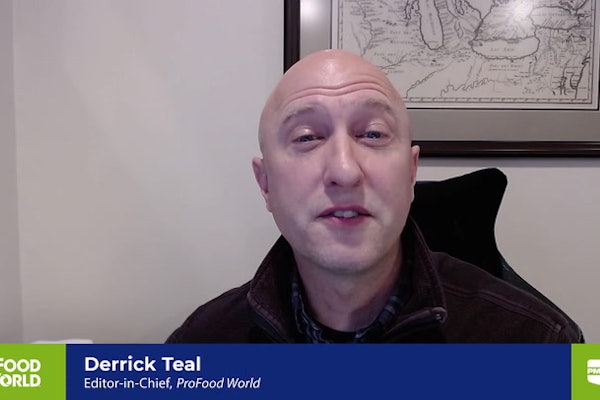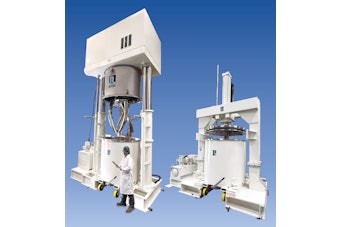In a recent ProFood World article by FSO Institute, we focused on the importance of developing a robust strategic plan to help manufacturers create direction clarity in their organization. The premise is simple: if you don’t know where you’re going, any road will take you there.
So, the first step to successful execution of a plan is the existence of a clear, concise one in the first place—whether it be a strategic plan, an action plan, an annual operating plan, or any other plan variation. That article provided guidance from FSO Institute’s Manufacturing Health Roundtable (MHRT) on just how to develop such a plan.
During their recent monthly virtual meeting, the MHRT followed up on their plan creation discussion by sharing some of their thoughts on why these plans often don’t get executed and what can be done about it. What follows are the highlights of the discussion and some color commentary and operational insights by FSO Institute Chief Manufacturing Coach Dan Sileo, formerly of Procter & Gamble, Sunny Delight, and Sugar Creek Foods.
FSO INSTITUTE: Some of the reasons why plans don’t get executed include no alignment at the top (no direction clarity), frequent direction changes (shifts in clarity), top team is aligned but no one else knows, no effort to share plans throughout the company to get buy-in, ownership and advocacy (BOA), no connection to individual roles (no role clarity), employees already too busy and no common processes and procedures for optimizing plans.
In your experience, how does this list sound to you and which are the most significant? Are there reasons you’d add that are not included in this list?
SILEO: You have an extensive list of which there is usually more than one factor in play. The only addition I would make, which is perhaps one of the most important ones, is when leadership actions and communications in the day-to-day operations do not match the stated plan. Even if the plan is well communicated, people at the point of execution adjust to the daily feedback they receive and will view the plan as just another “program of the month” to be managed somehow. Leadership needs to be self-aware of how they are impacting their people and intentional in supporting them in delivering the plan—they have to walk the talk.
FSO INSTITUTE: It seems that there are some standard responses to these challenges – rounding up the usual suspects, if you will – that include focusing on the fewest, most important tasks; developing scorecards, KPIs, RACI charts; and working on the most important issues first – addressing the burning platforms and working on cultural change.
No doubt these are extremely important, but since they are people-dependent couldn’t they all benefit from better leadership, better teamwork and better individual performance?
SILEO: Absolutely. And it is the interconnectedness of these three that really makes it powerful. A good servant leader through coaching and barrier removal fosters better individual and team performance which frees up time for the leader to invest more in them as well as PDCA (Plan, Do, Check, Act) the plan. So many times, particularly at the plant level, the focus is on equipment, lines, supplies, etc. and not on people. For most, it seems easier to work on these things than on the people challenges they face. These are the harder things to do so not sure why they’re always referred to as soft skills.
FSO INSTITUTE: Let’s drill down on these three pillars of execution starting with individual performance. The focus here is on the most essential elements of individual performance improvement including understanding of self and others (Emotional Intelligence), personality traits that count the most (Big 5 Personality Factors) and doing what high performers do (key characteristics).
Can you provide an example or two of just how these elements can play out at the plant level and improve individual performance and overall plant operations?
SILEO: Think about the Big 5 Personality Traits (conscientiousness, extroversion, agreeableness, emotional stability, and openness to experience) and how a team member who seeks out and values feedback on how they perform on a team cuts across all the factors. Not only do these traits drive better personal performance but typically breaks down walls to acceptance for others who may not be as open since they “exposed” themselves first. A few champions who exhibit these traits on the plant floor can go a long way in inspiring others to do so as well. This helps build a level of trust that it’s not about “me” but about “we” on the team.
FSO INSTITUTE: Let’s talk about better leadership. The focus here is on what’s expected of great leaders and what’s required to become one including saying goodbye to command and control leadership (Servant Leadership), leadership traits that matter most (8 Traits of Authentic Leaders) and doing what leaders you like the most do (Leadership Green Flags).
Can you give a couple of examples of how better leadership at plant level contributes to improvement in overall plant operations?
SILEO: As we talked in the previous example about the Big 5 Personality Traits, this is most important for the leader who must exemplify the factors showing the team members what they expect. I have seen good leaders begin to transform underperforming teams just by moving from command and control to a servant leadership style that incorporates the Big 5. The 8 Traits of Authentic Leaders (honest, self-aware, genuine, consistent, purpose-driven, humble, and ethical) now become the propellant that moves the team forward. So, if the plan is well communicated and the leader is constantly driving the team to deliver, giving credit to the team or individuals for successes, supporting when there are failures, and delivering on any commitments they made, the team becomes excited to perform.
FSO INSTITUTE: Finally, let’s talk about better teamwork. The focus here is on the cultural components that create the greatest likelihood of getting things done including cultural change that everyone wants (Culture of Collaboration), making dysfunctional teams functional (5 Dysfunctions of Teams) and if it’s not safe, it’s not functional (Psychological Safety).
How does better teamwork at the plant level contribute to overall plant operations?
SILEO: We have all seen individual pockets of excellence or departments that seem to perform well above the norm because they operate well as a team. When you get the leaders across the facility employing all the tools we have talked about and they collaborate instead of driving their team to win at the expense of others, we typically see results take off. This requires that plant leadership foster psychological safety, the open communication, respect, shared goals, and trust across the organization. Psychological safety enables engagement, fear diminishes it. Simple tools like an effective Managing for Daily Improvement (MDI) process often provide a framework at all levels and across all functions of the organization to build this culture and provide a safe way to contribute to the overall plan.























